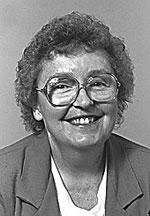Cornucopia / Cynthia Dewes
We won’t forget our Hoosier veterans this year
 Out here in Putnam County, people like to support our troops at war in Iraq and Afghanistan.
Out here in Putnam County, people like to support our troops at war in Iraq and Afghanistan.
They try to thank them for their service with farewell dinners, welcome home dinners, gifts for their kids at Christmas parties, and whatever else they can think of. Patriotism is not dead in the countryside.
Actually, patriotism has always been a popular attitude in Indiana. Downtown Indianapolis is a veritable hotbed of it, with monuments, statues and memorials galore of American historic events and heroic people. The Indiana Historic Landmarks Foundation conducts tours of these sites for local visitors, school children, tourists and veterans’ groups.
Among the places that they visit are the U.S.S. Indianapolis Memorial, which honors the World War II cruiser sunk by the Japanese in the Pacific Ocean after delivering atomic bomb components to Tinian Island. They also see World War II, Korean War and Vietnamese War monuments, and the Soldiers and Sailors Monument to the Civil War on Monument Circle.
One of the most popular and significant places on the tour is the Indiana World War Memorial. This large and impressive building houses the Indiana War Memorial Commission, whose main mission is to honor Hoosier veterans. One way they do this is to offer the use of their facilities free of charge for funerals of Hoosier veterans.
In addition to the Commission, the Memorial contains a military museum on the basement floor, including a full-size helicopter, meeting rooms and an auditorium on the ground floor, and a vast shrine room on the third floor.
At present, the Memorial’s two major meeting rooms are named for generals involved in World War II, Generals Douglas MacArthur and George Patton. The board room is named for Admiral Chester Nimitz, also of World War II fame. Now the Commission hopes to re-name these rooms more appropriately to honor Hoosier veterans.
Fourth- and fifth-graders all over Indiana, who study American and Indiana history in their grades, are being asked to send suggestions for re-naming these rooms. The project involves students doing research on Hoosiers involved in American wars, then writing short essays on their choices. All suggestions will be considered until the third weekend of May when the winning names are announced on Armed Forces Day.
Interested teachers or students in grades four and five may contact the Commission with their suggestions by calling 317-232-7615 or by writing to 431 North Meridian St., Indianapolis, IN 46204.
To date, the most popular Hoosier names in the running are all veterans of World War II: Admiral Raymond Spruance, who was commander of the Fifth Fleet and for whom a class of destroyers is named; Ernie Pyle, the famous journalist whose contribution is honored in his hometown of Dana, Ind.; and Walter Bedell Smith, who was General Dwight D. Eisenhower’s chief-of-staff during the war.
As any older person will tell you, patriotism seemed easier to define during World War II. It simply meant fighting for survival and the upholding of American ideals of political and religious freedom. Unfortunately, patriotism for many today has come to mean mindless jingoism and a thirst for military vengeance.
Unlike recent wars, during World War II people actually felt scared and personally threatened by the enemy. No one wanted war, or justified acts of war as moral events, including dropping the atomic bomb, but they believed in the right of self-defense.
Perhaps a deeper study of what values people and nations consider worth dying for will help the fourth- and fifth-graders of today become better world leaders tomorrow. We can only hope.
(Cynthia Dewes, a member of St. Paul the Apostle Parish in Greencastle, is a regular columnist for The Criterion.) †
 Out here in Putnam County, people like to support our troops at war in Iraq and Afghanistan.
Out here in Putnam County, people like to support our troops at war in Iraq and Afghanistan.